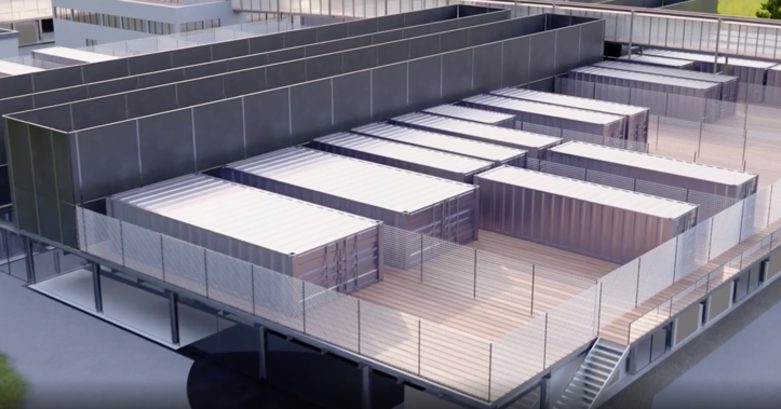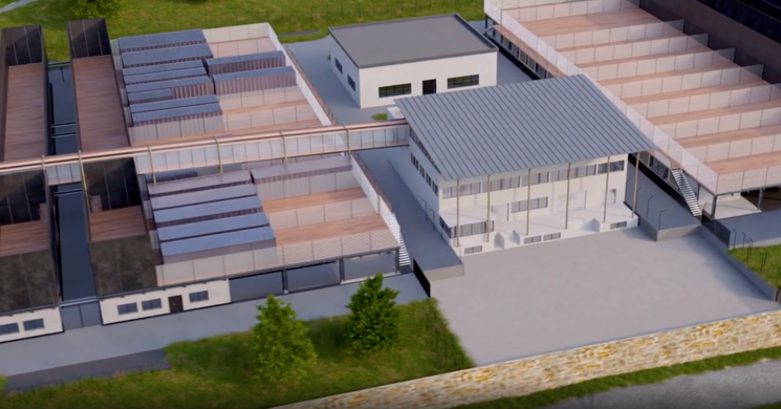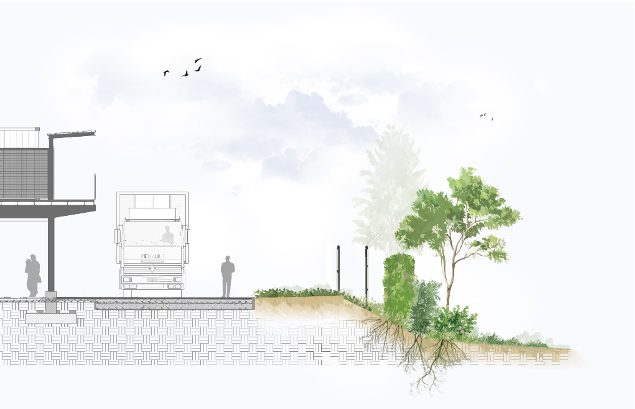Bruyères-le-Châtel will host Eclairion, France’s first containerised supercomputer hosting centre, next autumn
To meet the growing needs of companies and research, Eclairion, France’s first data centre dedicated to hosting high-density computers in container modules, announces its operational launch in the autumn of 2023.
Located in the park of the castle, this temple of calculation, artificial intelligence, digital simulation and big data has the following slogan: “Faster calculation for a better world”.
Eclairon’s mission is to meet the growing needs for high-density computing, or High Performance Computing (HPC), of large groups, universities, research centres, SMEs and start-ups seeking resources for their research, development and innovation activities.
Eclairion will have a unique infrastructure. The installations have the characteristic of being completely dismountable, or transformable for different functions, at the end of the site’s operation. The infrastructure will be based on 3.50 m metal gratings. It will be organised into four separate villages of 2,500 m², each capable of accommodating container modules containing the high-density computers. At the heart of these four platforms will be the logistics building. Eclairion will therefore allow each of its customers to choose the configuration of their needs in terms of intensive calculations and to develop it without constraints.
A second building, located outside the secure enclosure, will accommodate customers and allow them to work on the site, close to their installations. These two buildings will be connected by a footbridge that will give an aerial view of the site, like a gazebo.
Eclairion completes this “sovereign digital territory”, which already includes the CEA’s military applications department and the Teratec high-performance digital simulation centre nearby. We will be following the progress of this project, which began discreetly this summer in the park of Bruyères-le-Châtel, and which will contribute to making our town known throughout the world.
Mindful of the surrounding landscape, major landscaping work will ensure the harmonious integration of all the infrastructures.
A protective rural cordon will combine a selection of rural trees and shrubs of various types and sizes (Oak, Hornbeam, Dogwood, Holly, Honeysuckle), in order to create a coherent link with the edge of the forest.
The use of so-called indigenous varieties makes it possible to include the site in a coherent approach and to ensure the sustainability of the peripheral plant base. The diversification of species will allow the installation of a greater number of species in order to reconstitute a vegetal procession from local areas.


Forest swathes will also be reconstituted sparsely to favour the shelter of artificial lodgings and for the fauna at the right of the project or in the vicinity (avifauna, bats).
On Rue de la Libération, tree lines majestically accompany the entrance to the site, creating a curtain of trees that will eventually become part of the continuity of the wooded passageway.


The second building, located outside the enclosure, will be accompanied by facilities to make use of the excavated and backfilled land. Landscaping will be created to accommodate rich ornamental vegetation consistent with its immediate environment. Differentiated management will allow the conservation of meadows with controlled mowing in order to encourage biodiversity.
Rainwater infiltration areas, basins and ditches will allow open-air management of run-off water.
The capture of water volumes and the installation of green roofs encourage biodiversity and become a precious ally in the fight against heat islands. The phenomena of evapotranspiration and transpiration of plants will allow the reduction of temperatures in urban areas and the cooling of buildings through the creation of islands of coolness.